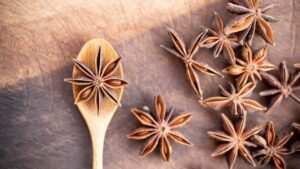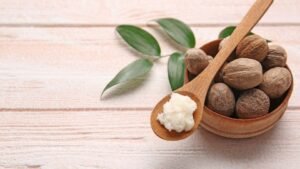| ✨Hey there! This post may contain affiliate links, meaning we earn a commission if you make a purchase through our links, at no cost to you. Please read our disclosures for more info. |
Anise Hyssop (agastache foeniculum) is a flowering perennial plant from the mint family Lamiaceae. Like other plants in this family, it is known for its aromatic stem, leaves, and flowers. The essential oil of this plant is used to relieve many ailments including respiratory illnesses.
Very closely related to both the anise and tarragon spices the scent of anise hyssop can feel vaguely familiar. This herb‘s scent is reminiscent of a minty licorice with a pinch of a sweet aroma, akin to pineapple.
It is not very common to find this herb and recognize its scent. But if the scent of chamomile along with liquorice called be recalled, that is what anise hyssop could be most similar to.
Many insects and pollinating animals are attracted to this plant. The plant allows for bees, butterflies, hummingbirds, and others to gather the abundant nectar it yields.
Anise Hyssop is also popular amongst gardeners that are looking to attract butterflies and other wildlife to their garden patches. Anise Hyssop is a perennial that comes from the mint family known as Lamiaceae.

The subgenus plant typically harvested for its delightful aroma is the Agastache “Fragrant Delight.” This genus is a tall and grand purple plant with dozens of little flowers sprouting at the top end.
It is a wonderful plant to have as a backdrop to many other low shrub herbs and plants.
Historical Use of Anise Hyssop
The Native American tribes have one of the first recorded uses of anise hyssop, using it medicinally and for flavoring their foodstuff.
Because of the sweet flavor profile, anise hyssop was often used to sweeten certain foods. It was also possibly used for making a tea beverage since the plant has a taste profile similar to that of licorice.

Therapeutically, anise hyssop was used by the native Americans to aid in healing and mending a broken heart. Anise Hyssop would be bundled together into batches for burning during healing ceremonies and other ritual-type practices.
Another popular method for using Anise Hyssop was in a low-profile hut designed as a sauna for the Native American tribesmen. They would diffuse the scent of the Anise Hyssop, by placing the aromatic herb on very hot rocks. This would promote feelings of well-being.
Medicinal Properties of Agastache
Anise hyssop contains many polyphenols and antioxidants that can be used to combat many ailments. If the body is experiencing any stagnant energies or pain, anise hyssop essential oil can be used for relief.
The native Americans used the herb to help with chest pains, heart problems, digestive system discomfort, and other antiviral and anti-inflammatory purposes. Other cultures have incorporated the use of this herb for similar natural remedies.
Anise Hyssop is popularly used in traditional Chinese medicine and is known to be a part of the 50 fundamental herbs for healing practice. Anise Hyssop is believed to help in all of the above and relieve respiratory infections and discomfort like from a cough, cold, and flu.

There are another two variations of the Anise Hyssop plant that have similar profiles but contain varying amounts of aromatic compounds and are referred to as other sister species of the “fragrant delight,” known as “Korean mint” and “hummingbird mint.” These other two plants have a more pronounced minty flavor profile, as indicated by their name.
The Anise Hyssop plant contains an abundant amount of volatile organic compounds (VOCs). These VOCs can produce many perceptive effects on the mind.
The scent is said to uplift and awaken the heart, removing any feelings of depression and melancholy. Burning or diffusing the plants’ aromatic compounds can promote a positive and uplifting environment.
Agastache Essential Oil
The predominant molecular compound responsible for the smell of anise is methyl chavicol. The aroma produced from this plant is used in perfuming mixtures and was shown to help deter pests that target certain foods like grains.

The Agastache essential oil can be found labeled under the name hyssop. Hyssop essential oil can be used, as mentioned above, for most ailments.
It would be wise to keep this plant and essential oil handy for mild cases of discomfort that arise as a form of holistic medicine and healing.
Learn more about other healing essential oils, tinctures, and herbs by visiting the corresponding catalog pages.
Using Anise Hyssop Therapeutically
Diffusing Anise Hyssop Essential Oil
Diffusing hyssop is ideal for people who are experiencing respiratory discomfort and other symptoms related to the lungs. Adding an additionally calming scent to hyssop will help soothe any symptoms that would otherwise be exasperated by using stronger essential oils such as eucalyptus and peppermint.
Sometimes keeping the air quality clean, oxygen-rich, and easy to breathe in, as recommended with this diffuser recipe above, can help alleviate most symptoms.
Drinking Anise Hyssop Tea
Drinking tea is kin to having soup; it is basically a broth full of nutrients and phytochemicals that have been brought together in a simmering stew, and it can certainly be a lovely one.
Hyssop, the herb, can be combined with hot water and a little honey for a basic brew that will promote good upper respiratory health. Add the popular demulcent Licorice and slippery elm bark, and you will have a ready-made cough-reliving concoction in your hands.
This tea can be especially useful for bronchitis, dry coughs, and other respiratory ailments. Please consult with your naturopathic doctor to make sure this remedy will not interfere with any other prescriptions.
Make Anise Hyssop tea:
- Boil 10 ounces of water and pour over 1 tbsp of dried anise hyssop flower, and let it steep for 10 minutes. For a fresh herb, use 2 tbsp of hyssop.
- Strain the mixture, and drink as you would your favorite cup of tea. Use this recipe even after dinner, as a digestive aid.
Tincture
You can make or purchase an anise hyssop tincture ready to use for just about any occasion.
A good method for incorporating tincture use would be to start with 1 to 3 drops for aiding emotional and energetic imbalances. You can put those drops into an 8-ounce cup of water and drink as you would normally.
For physical ailments such as a cold, nausea, upset stomach, or feelings of nervousness, try to do 10 drops in 8 ounces of water starting at 1 to 2 times a day. This can be increased to 20 drops three times a day for a stronger effect.
Learn more about making a tincture from any herb here.
Visit Forthefeels.com for more information on herbs, tinctures, essential oils, and honing in on a Home-based herbal apothecary practice.




